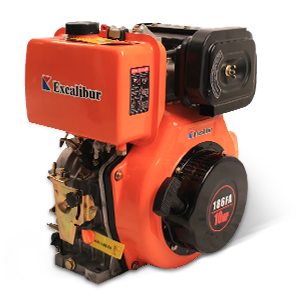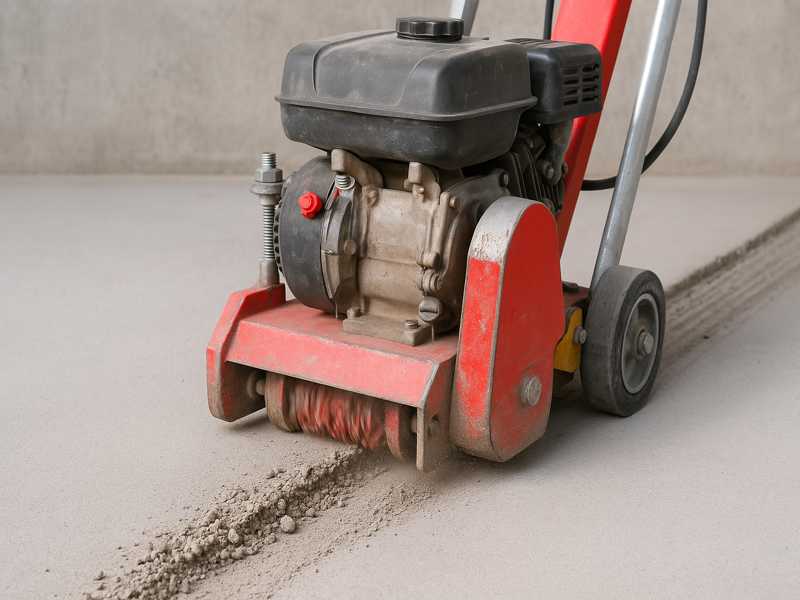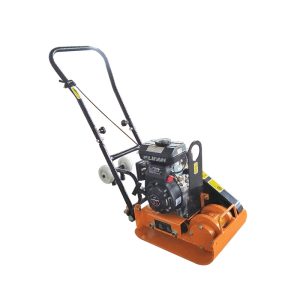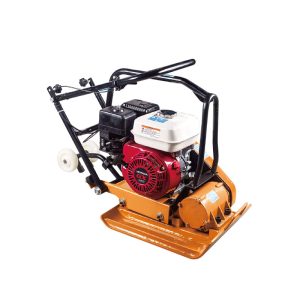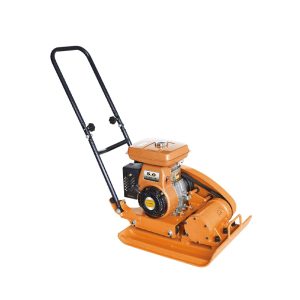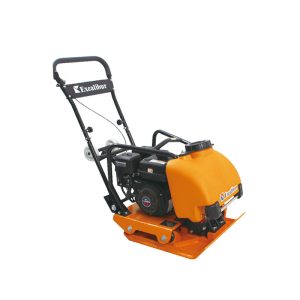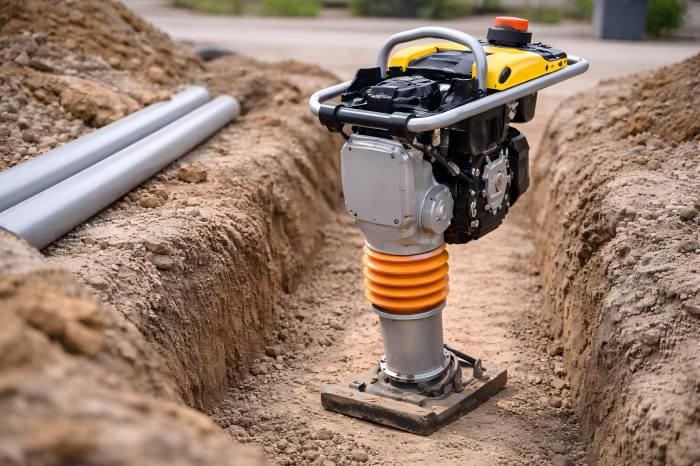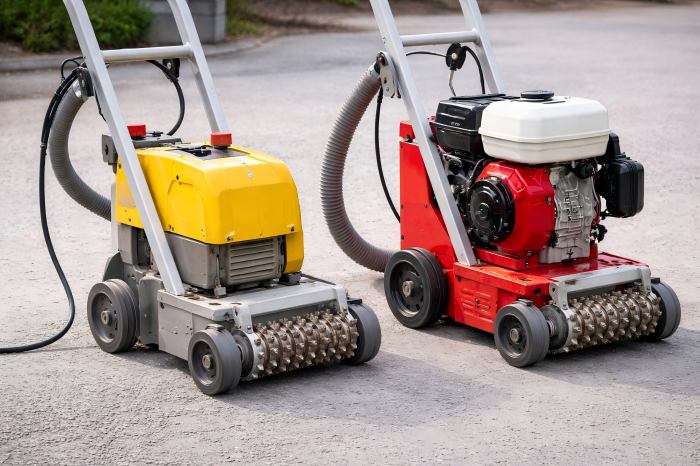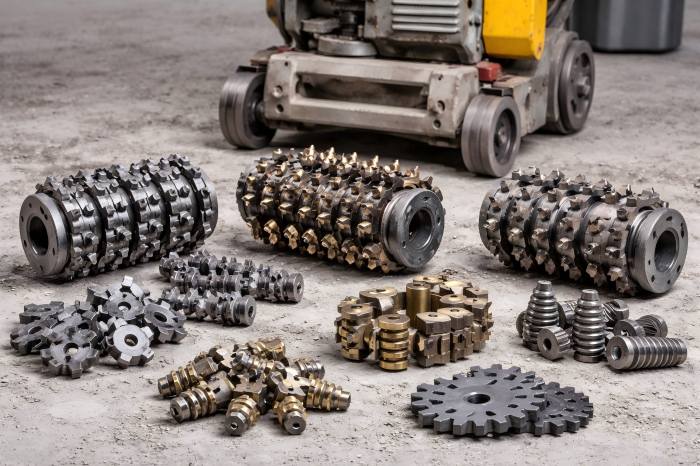Concrete scarifiers remove surface layers, coatings, and contaminants efficiently. Whether you’re preparing a warehouse floor, repairing pavement, or leveling high spots, understanding how deep a scarifier can cut is essential for planning the job efficiently and choosing the right machine.
What Is a Concrete Scarifier?
A concrete scarifier uses rotating shafts fitted with cutting tools (typically tungsten carbide cutters or steel flails) that impact the surface at high speed. The result is a chipping action that removes concrete and coatings. Scarifiers are known for:
- Removing up to 1/4 inch (6.35 mm) of concrete in a single pass (in heavy-duty models)
- Producing textured or grooved finishes
- Being used in both horizontal and vertical applications
Unlike grinders, which abrade surfaces slowly and smoothly, scarifiers are aggressive and ideal for quick material removal.
Typical Cutting Depths of Concrete Scarifiers
Scarifier depth depends on multiple factors such as machine power, cutter type, pass speed, and surface hardness. Below is a general guide to depth per pass:
| Machine Type | Power Source | Typical Cutting Depth per Pass | Max Depth Achievable |
| Handheld Scarifier | Electric (1–2 HP) | 1/32″–1/16″ (0.8–1.6 mm) | 1/8″ (3.2 mm) |
| Walk-Behind Light Duty | Gas/Electric (5–8 HP) | 1/16″–1/8″ (1.6–3.2 mm) | 1/4″ (6.35 mm) |
| Walk-Behind Heavy Duty | Gas/Diesel (13–20 HP) | 1/8″–1/4″ (3.2–6.35 mm) | 1/2″ (12.7 mm) |
| Ride-On/High Production | Diesel/Electric (>25 HP) | 1/4″–3/8″ (6.35–9.5 mm) | Up to 1″ (25 mm) |
Scarifiers are not designed to replace full-depth concrete removal tools. For removal deeper than 1″, heavy milling or demolition tools are recommended.
Factors That Affect Scarifier Cutting Depth
Understanding cutting depth requires knowing what impacts it. Here are the top factors:
Machine Size and Power
Higher HP machines remove concrete more aggressively and at deeper depths.
Heavy-duty models with 13–30 HP engines can cut up to 1/2″ in a single pass.
Drum Configuration and Cutter Type
Tungsten Carbide Cutters (TCTs): Best for hard surfaces; deeper cutting.
Steel Cutters: Less aggressive; used for asphalt or coatings.
Spacing: Closer cutter spacing produces finer textures but lower depth.
Cutter Shaft Speed and Impact Rate
Faster rotation = more impacts per second = finer surface finish but may reduce depth per pass.
Slower rotation with fewer impacts may allow deeper removal.
Forward Speed of Operator
Slower pass = Deeper cut.
Fast passes reduce removal depth.
Surface Hardness
Softer concrete allows deeper penetration.
Hard concrete or reinforced sections resist cutting, reducing depth.
Calculating Removal Rates
To estimate how fast a scarifier can cut, consider:
- Depth of cut (inches or mm)
- Width of cutting drum (inches or mm)
- Speed of forward travel (feet per minute or m/min)
Example Calculation:
Assume:
- Machine width: 10 inches (254 mm)
- Depth per pass: 1/4 inch (6.35 mm)
- Travel speed: 15 ft/min (4.6 m/min)
Removal Volume = Width × Depth × Distance
= 10 in × 0.25 in × 180 in/min
= 450 in³/min
≈ 0.26 ft³/min ≈ 7.4 liters/min
This means your machine can remove 0.26 cubic feet or 7.4 liters of concrete per minute under optimal conditions.
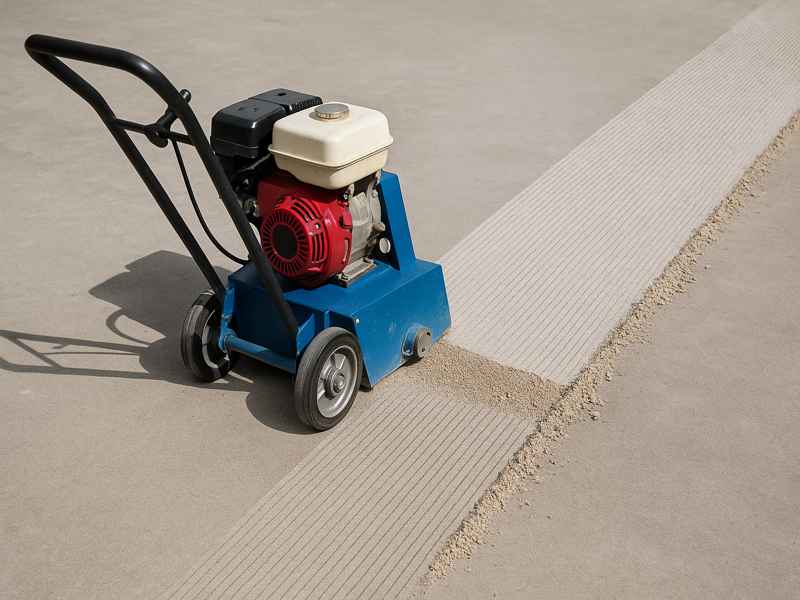
Scarifier vs. Grinder vs. Shot Blaster Comparison
| Feature | Scarifier | Grinder | Shot Blaster |
| Cutting Depth | Up to 1″ (25 mm) | 1/32″–1/8″ (0.8–3.2 mm) | 1/64″–1/16″ (0.4–1.6 mm) |
| Surface Finish | Rough, grooved | Smooth | Lightly textured |
| Removal Speed | High | Medium | Very High |
| Best For | Thick coatings, trip hazards | Polishing, light coating | Paint removal, profiling |
| Surface Damage | Moderate to High | Low | Low to Medium |
Scarifiers provide the deepest cuts, but the roughest finish. Follow-up grinding is often needed if a smooth finish is required.
Common Applications Based on Cutting Depth
| Application | Recommended Depth | Scarifier Type |
| Paint/Coating Removal | 1/32″–1/8″ (0.8–3.2 mm) | Handheld or Light Duty |
| Trip Hazard Reduction (sidewalks) | 1/8″–1/4″ (3.2–6.35 mm) | Walk-behind Medium Duty |
| Thick Epoxy Removal | 1/4″–3/8″ (6.35–9.5 mm) | Heavy-Duty Walk-Behind |
| Milling for Resurfacing | 3/8″–1/2″ (9.5–12.7 mm) | Heavy-Duty or Ride-On |
| Full Depth Removal (not typical) | >1/2″ (>12.7 mm) | Use Milling Machine/Demolition |
Examples of Popular Scarifier Models and Their Cutting Depths
| Model | Power | Cut Width | Max Depth | Usage |
| EDCO CPM-8 | 9 HP Gasoline | 8 in (203 mm) | 1/8″–1/4″ | Sidewalks, trip hazard removal |
| Husqvarna SC 330 | 13 HP Gasoline | 12 in (305 mm) | 1/2″ | Pavement milling, thick coatings |
| Bartell BEF320VX | 11 HP Diesel | 12.5 in (318 mm) | 5/8″ | Industrial surface prep |
| Blastrac BMP-335E | Electric, 20 HP | 13.8 in (350 mm) | 3/8″–5/8″ | High-production concrete milling |
Always consult the machine’s manual or specifications before assuming its cutting capacity.
How to Adjust Scarifier Cutting Depth
Scarifiers allow depth adjustment through:
- Depth knobs or levers: Control how far the drum descends into the surface.
- Weight balancing: Adding or shifting weight can deepen cuts.
- Speed adjustment: Lower travel speeds increase dwell time and cut depth.
Pro Tips:
- Start shallow to test the surface hardness.
- Gradually increase depth to avoid overloading cutters.
- Perform multiple passes for deeper cuts instead of forcing a single deep pass.
Safety Considerations When Cutting Deep
Cutting deeper into concrete increases tool stress and user risk:
- Dust Exposure: Use dust collectors or water suppression systems.
- Noise and Vibration: Use hearing protection and anti-vibration gloves.
- Tool Wear: Deep cuts dull cutters faster—inspect often.
- Rebar Impact: Hitting embedded rebar can damage tools—use scanning tools first.
Excalibur Products
So, how deep can a concrete scarifier cut?
Depending on the machine size and cutter setup, scarifiers can remove from 1/32″ (0.8 mm) up to 1″ (25 mm) in multiple passes. The depth is dictated by the machine’s power, cutter configuration, and operator control. For aggressive removal of coatings, overlays, or surface leveling, scarifiers offer unmatched depth potential and productivity.
If you need deep material removal, a heavy-duty or ride-on scarifier is the best choice. But for surface texturing or light coating removal, a handheld or light walk-behind model will suffice.
Understanding your project’s depth requirements helps you select the right equipment, increase efficiency, and reduce downtime. Whether you’re resurfacing a warehouse, leveling concrete, or prepping for overlays, scarifiers remain a powerful tool—literally cutting deep into the toughest jobs.

